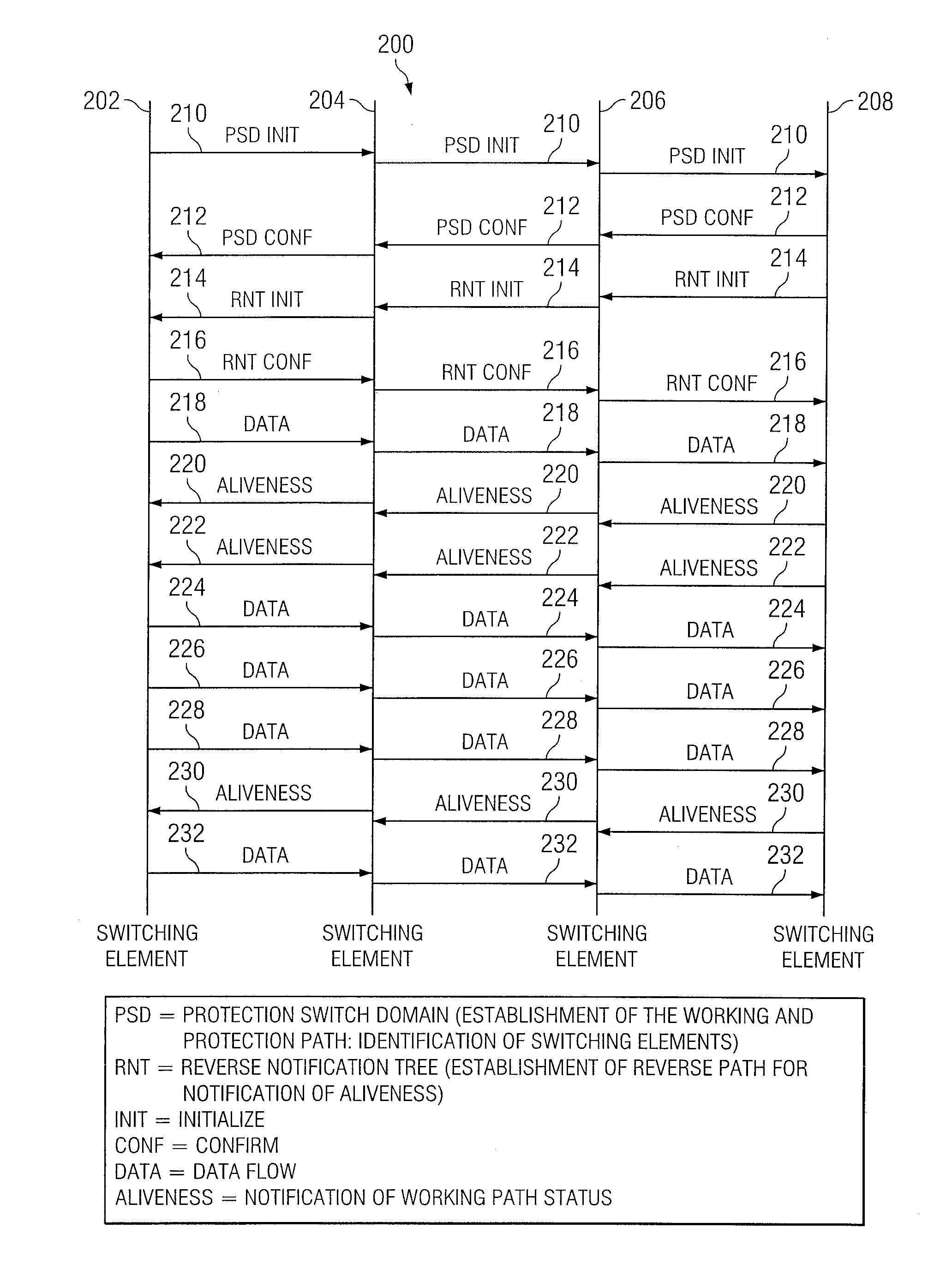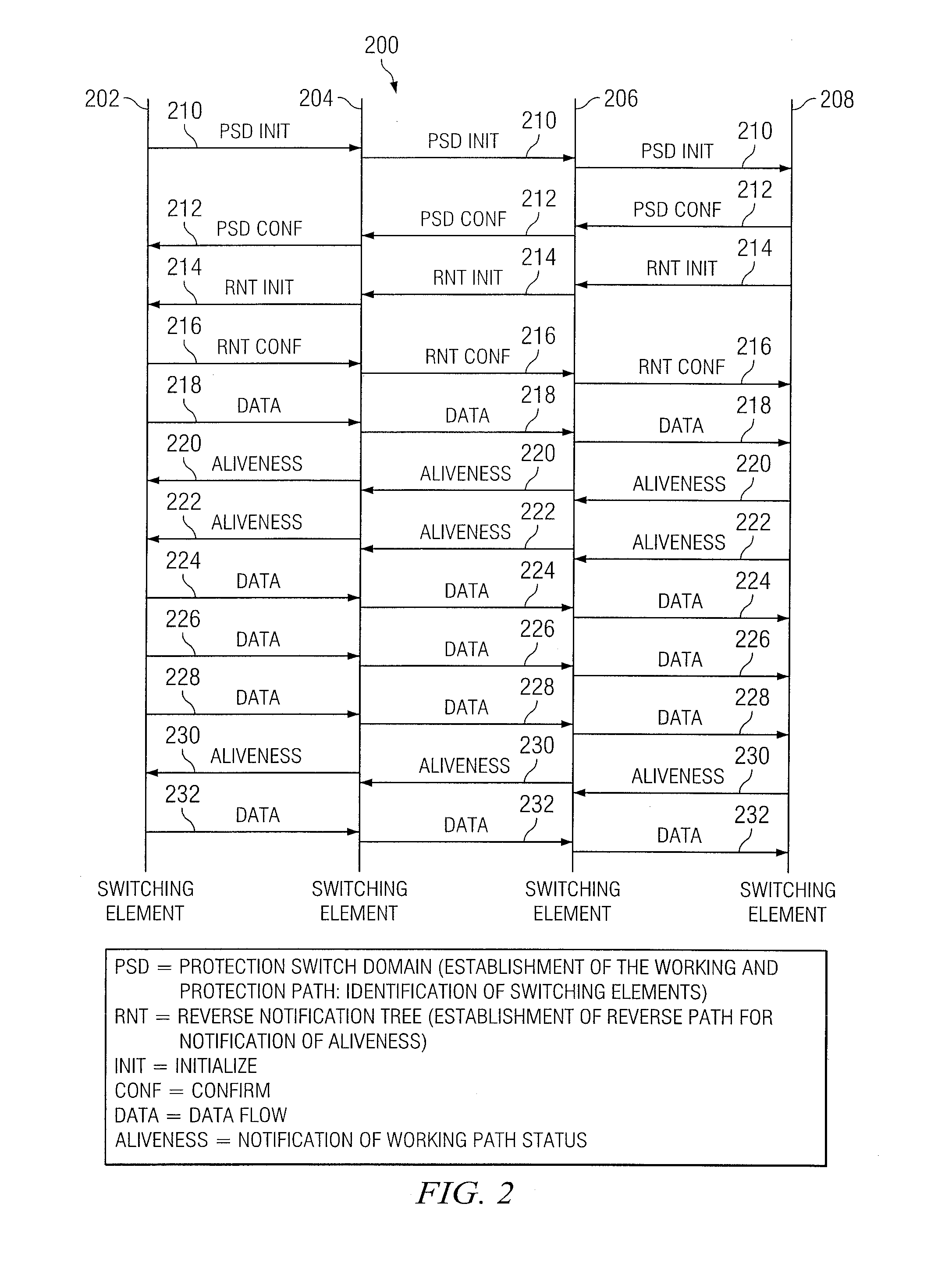Reverse Notification Tree For Data Networks
a data network and reverse notification technology, applied in the field of data networks, can solve the problems of inability to recover from a network failure in a timely manner, the amount of time required to recover from a link or switch the time required to recover from a network failure can take several seconds to several minutes, so as to minimize the loss of data, reduce the recovery time of network faults, and minimize the effect of data loss
- Summary
- Abstract
- Description
- Claims
- Application Information
AI Technical Summary
Benefits of technology
Problems solved by technology
Method used
Image
Examples
Embodiment Construction
[0014]FIG. 1 shows a simplified block diagram of a packetized-data switching network 100. Each of the squares shown in FIG. 1 including boxes represented by reference numerals 102, 104, 106, 108, 110, 112, 114, 116, 118 and 120 represent one or more types of asynchronous switching systems that asynchronously receive data in e.g., packets, cells or frames from an “upstream” switch and route, direct, couple or otherwise send the data onward to another “downstream” switch logically closer to the ultimate destination for the data. By way of example, these switching systems might be internet protocol (IP) routers, asynchronous transfer mode (ATM) switches, frame relays switches or other types of packetized-data switching systems implemented to receive packetized data over a transmission line and reroute the data onto one or more output ports to which are connected transmission media coupled to other switching systems.
[0015]In FIG. 1, switching system number 1, (identified by reference nu...
PUM
 Login to View More
Login to View More Abstract
Description
Claims
Application Information
 Login to View More
Login to View More - R&D
- Intellectual Property
- Life Sciences
- Materials
- Tech Scout
- Unparalleled Data Quality
- Higher Quality Content
- 60% Fewer Hallucinations
Browse by: Latest US Patents, China's latest patents, Technical Efficacy Thesaurus, Application Domain, Technology Topic, Popular Technical Reports.
© 2025 PatSnap. All rights reserved.Legal|Privacy policy|Modern Slavery Act Transparency Statement|Sitemap|About US| Contact US: help@patsnap.com



